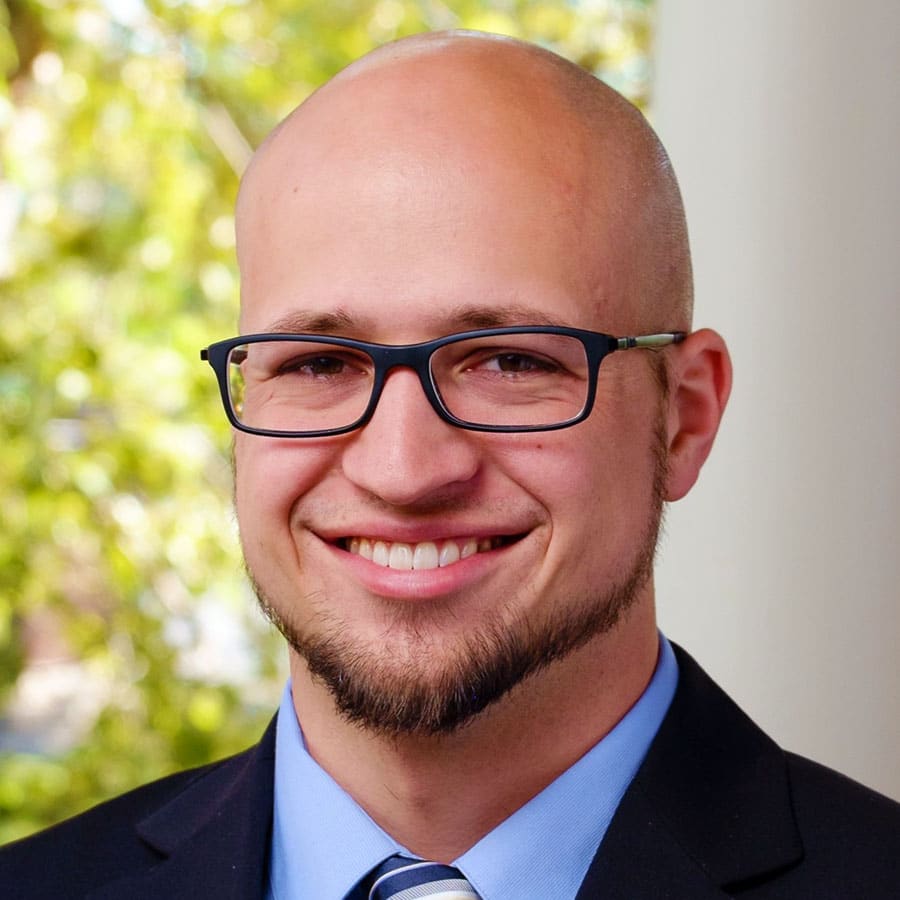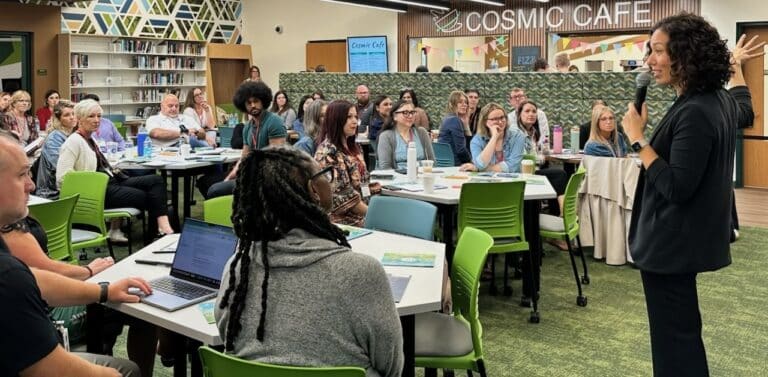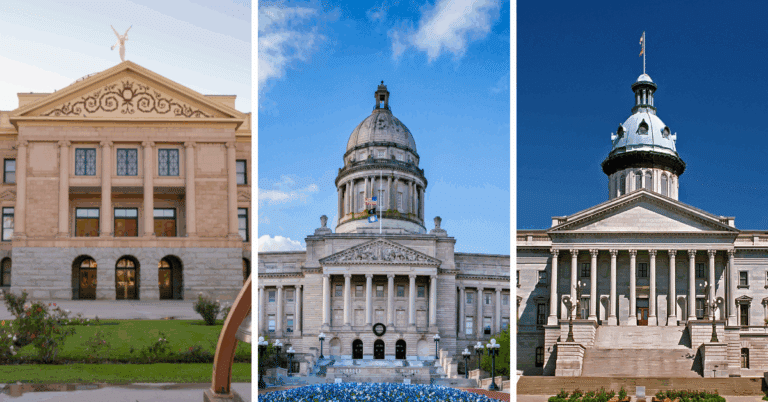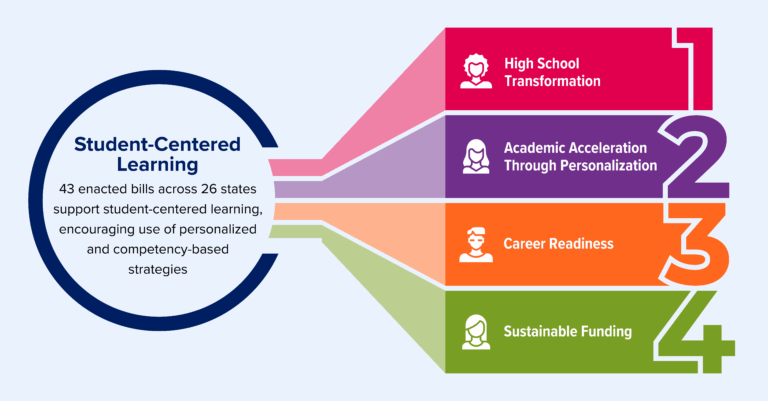State policy champions a clear vision for the purpose of the state’s K-12 education system, emphasizing the importance of preparing students with the knowledge and skills they need to succeed in a world that is constantly changing. The vision is operationalized through common learning frameworks and policies that integrate high-quality academic content with a focus on personalized, competency-based learning. The state’s vision is implemented through networks and resource creation.
Policy Flexibility
State policy frees schools and districts from traditional structures, especially those that ground learning in time- and location-based requirements. Balancing broad flexibility for local transformation with guardrails allows the state to safeguard educational quality and equity. Ongoing feedback opportunities help state policymakers identify lingering policy challenges and propose solutions to support transformation. The state department of education and other aligned organizations actively encourage the use of flexibility and share best practices across the state to help them spread.
Explore this condition further in the framework »
Flexible Learning Environments and Pathways
State policy allows all students to access and easily move between flexible student-centered pathways tailored to their needs and interests. This enables students to have a choice in when, where and how they demonstrate proficiency in key knowledge, skills and dispositions. These pathways include both traditional college- and career-ready opportunities, as well as a broader range of community-based learning experiences. The state establishes the resources and partnerships necessary to support statewide implementation.
Explore this condition further in the framework »
Accountability and Improvement Structures
The state’s accountability and school improvement system support the growth and development of all schools based on indicators that align with the state’s vision for student-centered learning. The system reinforces a reciprocal relationship between the state and districts, integrating common statewide and locally created indicators to guide state and local accountability and improvement. The public can easily access these data through a dashboard. Communities most in need receive resources to develop and execute continuous improvement strategies.
Explore this condition further in the framework »
Comprehensive State Assessment Systems
The state partners with educators to develop a coherent system of aligned formative and summative assessments that advance a shared commitment to student-centered strategies such as personalized, competency-based learning. The system measures essential knowledge, skills and dispositions, drives deeper learning, enables students to demonstrate proficiency when they are ready to do so, provides real-time data to inform instruction and gives students a choice in how they demonstrate proficiency. The state supports implementation with resources, feedback loops and technical assistance.
Explore this condition further in the framework »
Educator Development and Support
Educator preparation and workforce systems build statewide teacher and leader expertise in implementing student-centered learning approaches like personalized, competency-based learning. These systems and structures prepare educators with the competencies necessary to facilitate student-centered learning and support teacher retention, job satisfaction and personalized career advancement.
Explore this condition further in the framework »
Holistic Student Supports
All students have equitable access to student supports and the safe, vibrant learning environments that they need to ensure future success. This access includes whole child supports, academic interventions, technology and secure and healthy learning environments, as well as transitional supports for young people as they leave K-12 education and progress towards what is next. The state actively supports schools and districts implementing these supports through partnerships grounded in data.
Explore this condition further in the framework »
Responsive Funding Systems
State funding structures are designed to make it straightforward for schools and districts to adopt student-centered learning practices. These funding structures ensure that learners receive funding to meet whole child needs and pursue educational opportunities that support their learning goals and interests. Supportive systems help schools and districts understand how to work within these structures to advance student-centered learning strategies.
Explore this condition further in the framework »








